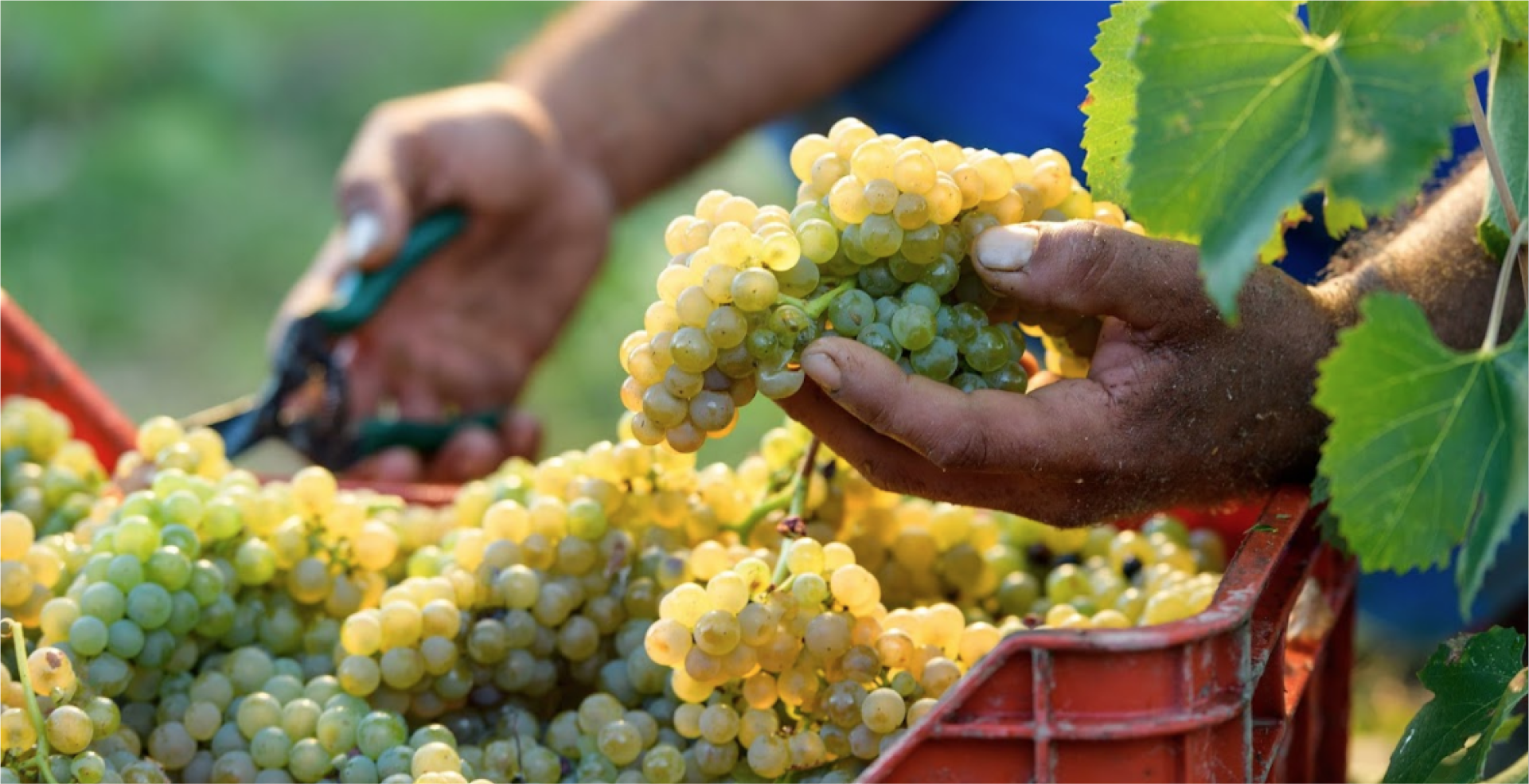The dominant landscape is characterised by an elevation range that goes from medium (300 - 500 m a. s. l.) to high (500 - 700 m a. s. l.) which, respectively, represent 51% and 23% of the entire DOCG Fiano di Avellino area. The remaining territory has an elevation range that goes from medium (700 - 1000 m a. s. l., 15%), high (1000 - 1577 m a. s. l., 7%) and low (235 - 300 m a. s. l., 4%).
The geology of the area is clearly dominated by calcareous and calcareous-marly lithologies, with discordant Quaternary deposits of predominantly volcanic and alluvial origin. Among the volcanic deposits, ignimbrite is mainly found in the valley bottom, associated with the deposits of the main watercourses, while alluvial deposits are also found, in patches, on the reliefs.
The predominant soils are Verisols (Eutric, Pellic and Calcic Vertisols), deep and fine-textured, and Cambisols (Calcari-Vertic Cambisols), fine to moderately fine-textured. The presence of moderately fine-textured Calcisols (Haplic Calcisols) and moderately coarse-textured Andosols (Molli-Vitric Andosols and Luvi-Vitriv Andosils) on ash and pumice fall deposits is also possible.
The slopes of the areas planted with the vines vary from moderate (5-13%) to strong (13-20%) and very strong (20-35%), with a dominance of strong slopes (40% of the area planted with vines). The exposures are broadly distributed among the different directions. The bioclimate of the vineyard area, classified using Winkler Index, ranging between 908 and 2136, with an average of 1836, is particularly well suited the production of fine wines. A significant impact on the quality of the grapes and the resulting wines is exerted by the summer temperature fluctuations that characterise the hilly area where Fiano is produced.
FIANO
DI
AVELLINO
TERROIR
Fiano di Avellino DOCG production area covers a total of 245.5 km2. It includes the territories of the municipalities of Avellino, Lapio, Atripalda, Cesinali, Aiello del Sabato, S. Stefano del Sole, Sorbo Serpico, Salza Irpina, Parolise, S. Potito Ultra, Candida, Manocalzati, Pratola Serra, Montefredane, Grottolella, Capriglia Irpina, S. Angelo a Scala, Summonte, Mercogliano, Forino, Contrada, Monteforte Irpino, Ospedaletto D’Alpinolo, Montefalcione, Santa Lucia di Serino and San Michele di Serino.
The area, partly falling within Partenio Regional Park, consists of the plain of Serino and an extensive hilly strip at an altitude of between 300 and 600 metres above sea level, bordered to the west by the Partenio mountain chain and to the east by the Terminio-Tuoro mountains.
The general climate of the area, that is typically Mediterranean, is locally influenced by the hilly orography and by the presence of numerous woods that mitigate the temperature peaks especially in summer. Winters are harsh, with snowfall whitening the mountains and hills of the area, while summer periods are very dry, with high temperature ranges.
WINEMAKING
Fiano di Avellino grapes are generally harvested between the third ten days of September and the second ten days of October. It is a very versatile variety, with crisp pulp and thick skin, which yields few phenolic compounds. This allows a plurality of winemaking approaches, from the sparkling method to the classic-traditional vinification process, which brings out the special longevity qualities of this variety, enhanced in the “Riserva” type, which requires an ageing period of minimum 12 months.
Fiano di Avellino is considered the most elegant Southern Italy’s white wines. The vinification process takes place mainly in stainless steel tanks, at a controlled temperature, to preserve the floral and fresh aromas of the vine; sometimes wooden barrels are used to obtain more structured and complex wines.
Types of Fiano di Avellino::
• Fiano di Avellino DOCG
• Fiano di Avellino DOCG “riserva”
which requires a minimum ageing period of 12 months.
PAIRINGS

During the ageing process, the extrovert Fiano di Avellino acquires a pleasant savouriness, depth, and softness, diluting its initial, acerbic, herbaceous character. Gifted with extreme brightness, during its life, it is tinged with various shades of yellow, from the initial greenish reflections to the magnificent golden robe it wears as it ages. Its captivating aromas can be immediately perceived with intriguing floral and fruity notes, mineral accents, and even spicy hints, such as saffron or hydrocarbons. Its taste is acid and savoury, always soft, to highlight its delicate elegance and finesse. In the first period of ageing, due to its freshness, it will perfectly pair with dishes with a distinctly sweet taste, such as spaghetti with anchovies and baked fish with potatoes, or with dishes with a high alcohol content, which accentuates the pseudo-caloric sensation, such as succulent fish soups. Because of its pleasant acidity, it can be paired with soft cheese like “Mozzarella di Bufalo Campana”, and then with different types of pizza and “calzoni”. Fiano di Avellino “Riserva” or another well-aged Fiano, due to its greater savouriness, pairs well with fried fish, fried pizza and “mozzarella in carrozza”. When aged in wooden barrels, which gives this wine greater softness and structure, more savoury organoleptic pairings are possible even with a perceptible acidic and/or bitterish taste. Description by Annito Abate, Delegate of AIS Avellino"



